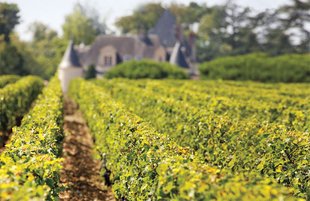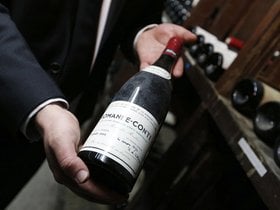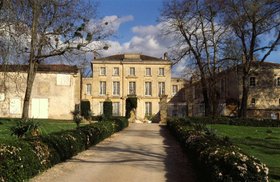What is First Growth Bordeaux? (The 5 Splendid Chateaux and Best Wines)
First growth or Premier Cru is the highest classification of Bordeaux wines.
There are five First Growth wines, which are exalted as a league above all others in Bordeaux - Chateau Latour, Chateau Lafite Rothschild, Chateau Margaux, Chateau Haut Brion, and Château Mouton Rothschild.
These 1st growths are produced from the finest terroirs by the most exceptional winemakers. They’re also some of the most expensive wines in the world. This article covers all you need to know about these premier cru wines - the five chateaus and their best wines, how they were included in the 1855 Classification, and what makes them unique.
Further reading
- Here’s everything you need to know about Investing In Fine Wines.
- Also find out the Most Expensive Wines in the world!
The Five Bordeaux First Growths (Including Best Wines, Prices)
Let’s take a quick look at the five Bordeaux 1st growths.
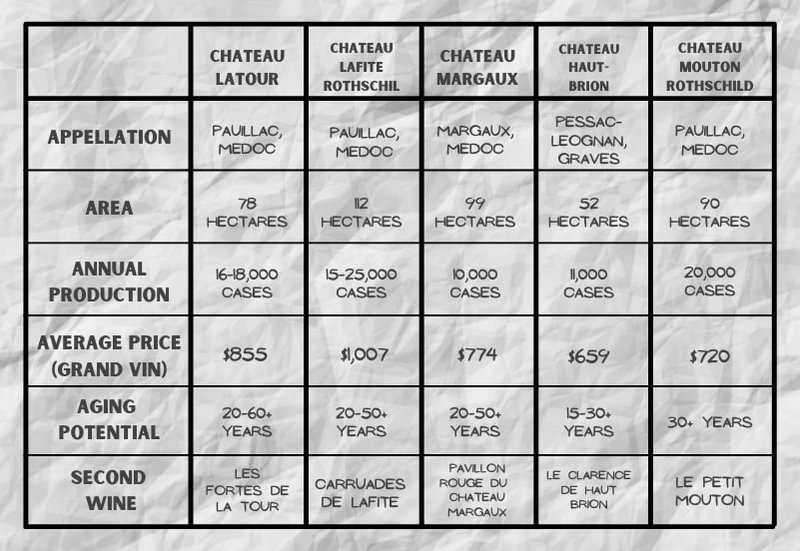
All the first-growth châteaux have a unique terroir that gives their excellent wines a distinct complexity.
1. Chateau Lafite Rothschild
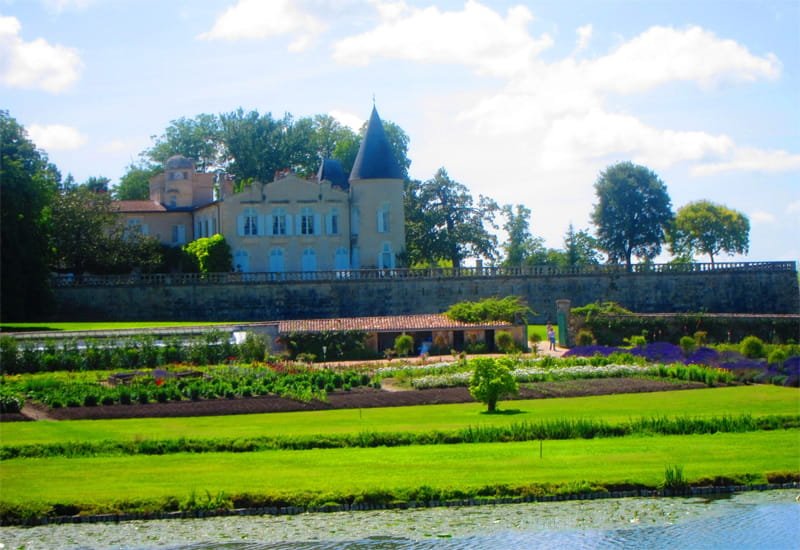
Situated in the Pauillac appellation of Medoc, Château Lafite Rothschild has 276 acres of vines, out of which 172 acres are dedicated to the Château Lafite Rothschild Grand Vin.
The vines enjoy the plateau’s deep gravel and clay soils, which are perfect for expressing the natural power of Cabernet Sauvignon.
The Grand Vin red wine is mostly Cabernet Sauvignon with about 20% Merlot and 3% Cabernet Franc. This Bordeaux wine is super tannic with dominant flavors of plum, tobacco, hazelnut, and salinity.
Best Wines
- 1869 Château Lafite Rothschild ($385,993)
- 1934 Château Lafite Rothschild 'Carruades de Lafite' ($1,192)
2. Château Margaux

Château Margaux is situated on the left bank of Bordeaux in Medoc. The estate’s vineyard is divided into four parcels. The fruit of each parcel is treated individually.
The fine Cabernet Sauvignon vineyard lies north of the Chateau - which makes up 75% of the premier cru.
Besides Cabernet Sauvignon, the red wine comprises Merlot, Cabernet Franc, and Petit Verdot grape varieties.
The winemaker practices organic viticulture to preserve the natural tannin, aromas, and concentration of Cabernet.
Best Wines
- 1884 Chateau Margaux ($17,751)
- 2005 Pavillon Rouge du Chateau Margaux ($306)
3. Château Latour

The secret of the Château Latour premier cru wine is the 47-hectare walled Medoc vineyard “L’Enclos.”
The Gironde and the clayey gravel of Pauillac create the perfect microclimate for the growth of Cabernet Sauvignon, which makes up 90% of the Grand Vin (the other being Merlot and Cabernet Franc.)
As a result, the Grand Vin showcases exceptional tannin, intense aromatics, great length, and complexity - a great wine to add to your cellar.
Best Wines
- 1899 Château Latour ($18,656)
- 1929 Château Latour 'Les Forts de Latour' ($769)
4. Château Haut-Brion
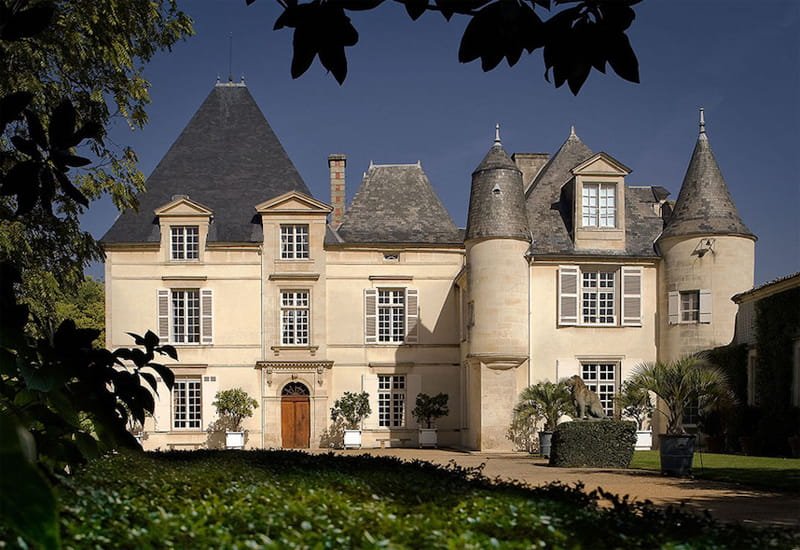
Situated in the Pessac Leognan appellation, Chateau Haut Brion is one of the earliest Bordeaux plots to be planted with vines. Its terroir is a blend of rolling slopes, large rocks, and loamy soils.
The Grand Vin is slightly different from the other first growths, with Merlot being the dominant grape. The blend is usually 50% Merlot, 40% Cabernet Sauvignon, and 10% Cabernet Franc.
This fine wine reflects firm tannins, complex oaky aromas, and dark fruit flavors.
Best Wines
- 1902 Château Haut-Brion ($6,011)
- 1917 Le Clarence de Haut-Brion - Chateau Bahans Haut-Brion ($1,103)
5. Chateau Mouton Rothschild
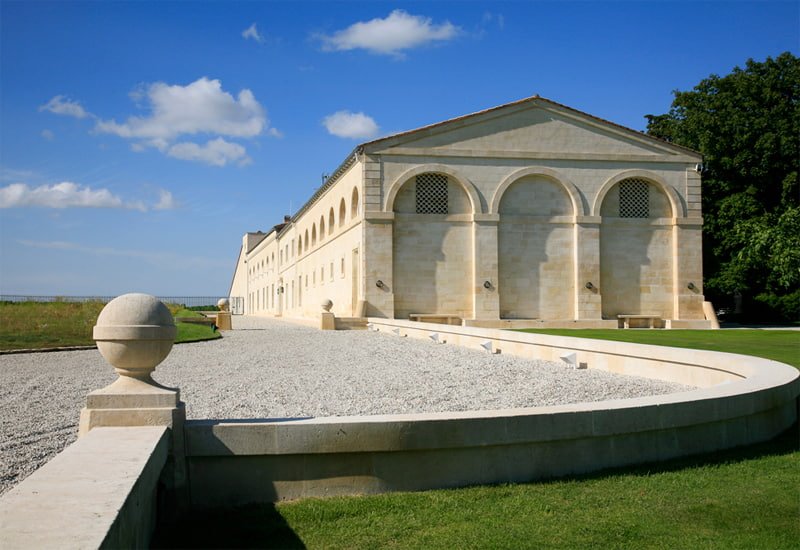
This youngest first-growth estate, Chateau Mouton Rothschild, is owned by the legendary winemaker Baron Philippe de Rothschild.
Its most precious vineyard lies on “the Grand Plateau,” where the vines enjoy brilliant sun exposure and deep gravel soils.
Like other wines from the Medoc region, Mouton Rothschild’s blend is also dominated by Cabernet Sauvignon.
This Bordeaux wine exhibits velvety tannins, delicious creme de cassis notes, and an intense minerality - a perfect addition to your cellar.
Best Wines
- 1945 Chateau Mouton Rothschild ($17,391)
- 1991 Le Petit Mouton de Mouton Rothschild ($678)
The Grand Vins of first-growth chateaux are excellent wines that start to reach their peak after at least 15-20 years of aging. They’re perfect for adding to your cellar.
These wines command high prices and show steady price appreciation. A great example would be the 2015 Chateau Margaux. Released at $454 per bottle in June 2016, the price of this vintage increased by 348% in 5 years, to $2,035 in June 2021.
Also, most First growth estates produce second-growth wines, which aren’t very far from the Grand Vins in terms of wine quality and prices.
But with such rare and expensive bottles, it is very easy to encounter a counterfeit bottle
That’s why it is crucial to source your fine wine from a trusted wine company like Vinovest, which will buy it directly from the winery or wine merchants.
You can also store your wines and sell them easily for a profit.
Now, the question is - what sets the five Bordeaux first growths apart?
What Makes A First Growth Wine Exceptional?

Most first-growth châteaux are situated in the Medoc region on the left Bordeaux bank, except Chateau Haut Brion winery of Pessac Leognan.
The fast-draining soils of Medoc push the vines to dig deeper in search of water. It adds concentration to the fruit and gives complex flavors to the wine. Gravel also retains heat during the summer, helping in the slow and complete ripening of the grapes.
It’s also what gives Medoc wines their classic minerality.
However, the flavors also depend on the individual plots. For example, Château Lafite Rothschild and Château Mouton Rothschild are located quite close, but the wines are entirely different.
Chateau Lafite has strong floral and spicy tasting notes, while Chateau Mouton Rothschild has intense cocoa, cigar, and camphor tasting notes.
The Official 1855 Classification Of Bordeaux
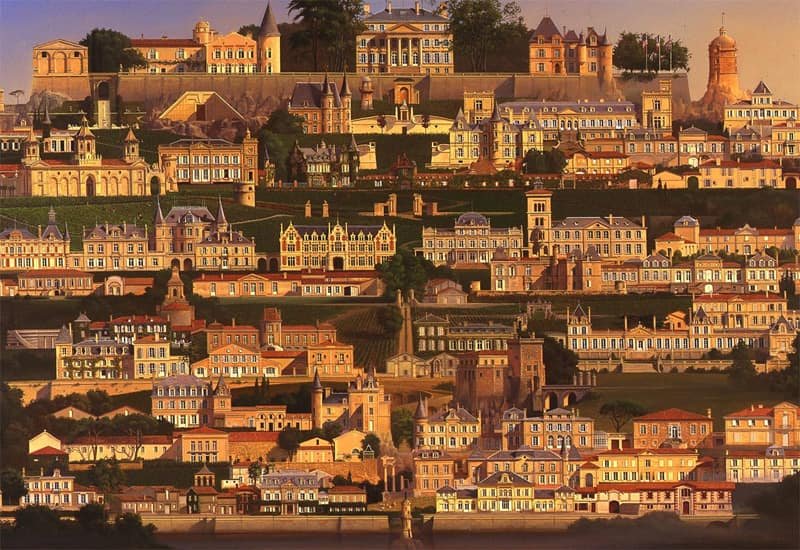
In the 19th century, Napoleon III, the French emperor, decided to build an unbeatable reputation for fine French wines.
With the help of the Bordeaux Chamber of Commerce, he gathered professional wine experts and wine brokers and asked them to rank 61 chateaux based on wine price, reputation, and wine quality.
The wine brokers presented their classification at “The Exposition Universelle de Paris 1855.”
There were five cru classes - the First being the highest-quality and highest-priced Bordeaux wine while the Fifth being the lowest in comparison.
Although the official classification of 1855 had four first-growth chateaux, in 1973, Château Mouton Rothschild was also added to the original classification.
- Château Latour (Pauillac)
- Chateau Lafite Rothschild (Pauillac)
- Château Margaux (Margaux)
- Chateau Haut Brion (Graves)
- Château Mouton Rothschild (Pauillac)
Chateau Haut Brion was the only estate from Graves to be classified as first growth.
The classification also included:
- 14 second-growths (including Cos d’Estournel, Lascombes, and Leoville Poyferre)
- 14 third-growths (like Palmer, Calon-Segur, and Ferriere)
- 10 fourth-growths (like Chateau Talbot, Saint-Pierre, and Beychevelle)
- 18 fifth-growths (including Chateau Lynch-Bages, Clerc-Milon, and Chateau de Camensac)
However, not every Bordeaux region accepted this classification. The producers from Graves (excluding Haut Brion), St Emilion, and Pomerol have their own classifications.
Also, the sweet wines of Sauternes and Barsac were ranked separately.
Bordeaux Sweet Wines Classification

The classification declared 9 Premier Crus (including Chateau Rieussec, Latour Blanche, and Vigneau) and 11 Dexieme Crus (including Mirat, Romer, D’arche, and Filhot.)
However, one white wine was exceptional - the Chateau d’Yquem white wine. The officials gave this Bordeaux wine the most coveted status of “Premier Cru Superieur.”
What are the other Bordeaux classifications?
Other Bordeaux Classifications
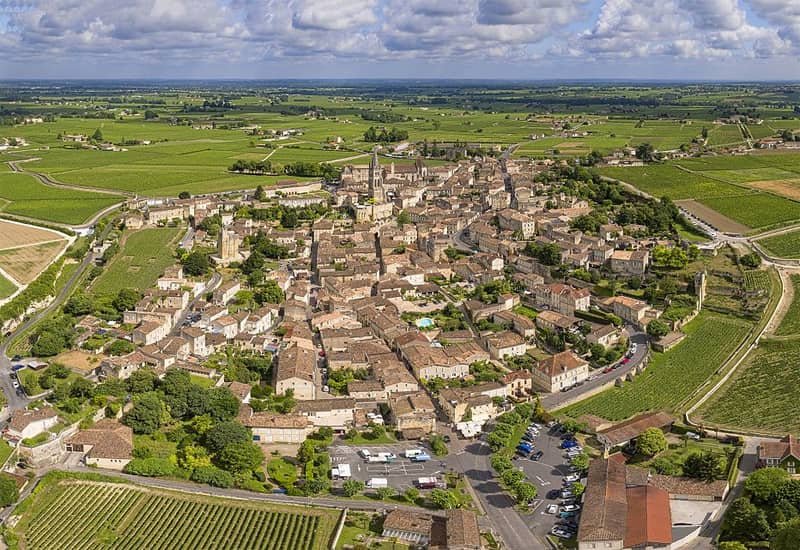
Not every Bordeaux region accepted or followed the 1855 classification. These regions were:
- St Emilion: St Emilion presented its own classification in 1955. The Saint Emilion Classification is updated every ten years and currently has 15 first Premier Crus Classes (2 Premier Cru Classe A and 13 Premier Cru Classe B.)
- Pomerol: It is the only region without any classification. Despite this, some of its red wines like Petrus and Le Pin are the finest wines produced in the area.
- Graves: After World War II, the reputation of Graves wines took a huge hit. To protect the quality and desirability of the region’s wines, it developed its own classification in 1953.
Wine regions like Burgundy have a separate classification system that uses “Grand Cru” to define the finest wines.
Add A Fine First Growth Wine To Your Collection!
First growth wines are the perfect example of finesse, elegance, and complexity. Their brilliant aging potential and price appreciation make them a perfect wine to add to your cellar.

So, sign up with Vinovest and explore the world of fine vintage wines and start building your very own exotic wine collection now.
